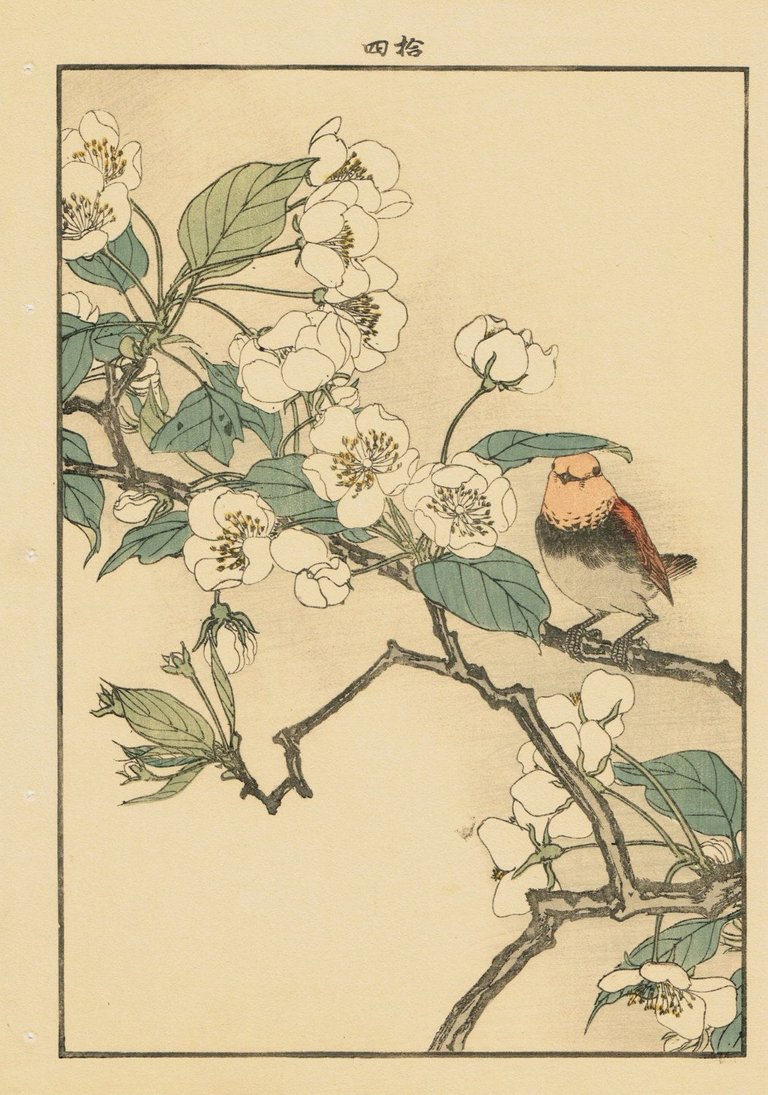Shiki's Pear Tree
a pear tree in bloom
by the ruins of a house
from the battle
—Shiki

A lonely scene. The people who lived in the house are gone, escaped to a safer area, or worse, the area marred by battle. Yet even in the horror of the landscape, the pear tree blooms: beauty survives. We are reminded of the Persian saying often ascribed to Rumi:
این نیز بگذرد
This too shall pass.
After the terrible war has passed and faded, nature will remain and will triumph in the end.
Shiki wrote this verse in April 1895, during his time in China as a war correspondent for the first Sino-Japanese War. Beyond the obvious suggestion of the cruelty of war, this haiku is doing something else. Shiki is poking at Bashō.
Bashō, if you haven't heard the name, is most famous haiku poet in Japanese history. Buson, who I posted about the other day, idolized him. As do most serious haiku poets today. But Shiki wasn't a fan and he often critized Bashō's haiku. In this case he was calling back to one of Bashō's most popular verses.
Two centuries before, Bashō visited the ruins of Takadate Castle and wrote:
夏草や兵どもが夢の跡
Natsukusa ya tsuwamono-domo ga yume no ato
summer grass...
the only remains
of the soldiers' dreams
Bashō was referring to a tragic event which took place seven centuries prior, when the great warrior Yoshitsune and his men were betrayed and slaughtered by the treacherous Yasuhira.
Shiki takes the setting Bashō gives and changes the focus. Whereas Basho's poem referenced a long forgotten conflict, Shiki refers to a recent battle, and where Basho's verse expressed a kind of veneration for the long dead warriors, Shiki does the opposite and instead puts our attention on the innocent victims of the conflict.
In addition to the poke at Bashō, this haiku is also very much in Shiki's "visual painting" style (写生 Shasei). You can almost picture the haiku like a movie, first the camera tight on the beautiful pear tree, then pulling back to show us the ruined house, then back still to show us the scars of the battleground.
It doesn't entirely fit, but this haiku always recalls to my mind a scene near the end of The Good, the Bad, and the Ugly, when Clint Eastwood's character wanders into an American Civil War battlefield and stumbles across a collapsed church, goes in and comforts a dying Confederate soldier. I can hear that haunting soundtrack in my head as I read the haiku. Maybe now you can too.[2]
❦
 | David LaSpina is an American photographer and translator lost in Japan, trying to capture the beauty of this country one photo at a time and searching for the perfect haiku. |
That is, me! If you like this translation, feel free to use it. Just credit me. Also link back to this page. ↩
Congratulations @dbooster! You have completed the following achievement on the Hive blockchain and have been rewarded with new badge(s) :
Your next target is to reach 80000 upvotes.
You can view your badges on your board and compare yourself to others in the Ranking
If you no longer want to receive notifications, reply to this comment with the word
STOPSupport the HiveBuzz project. Vote for our proposal!
This post has received a 100.00% upvote from @fambalam! Join thealliance community to get whitelisted for delegation to this community service.